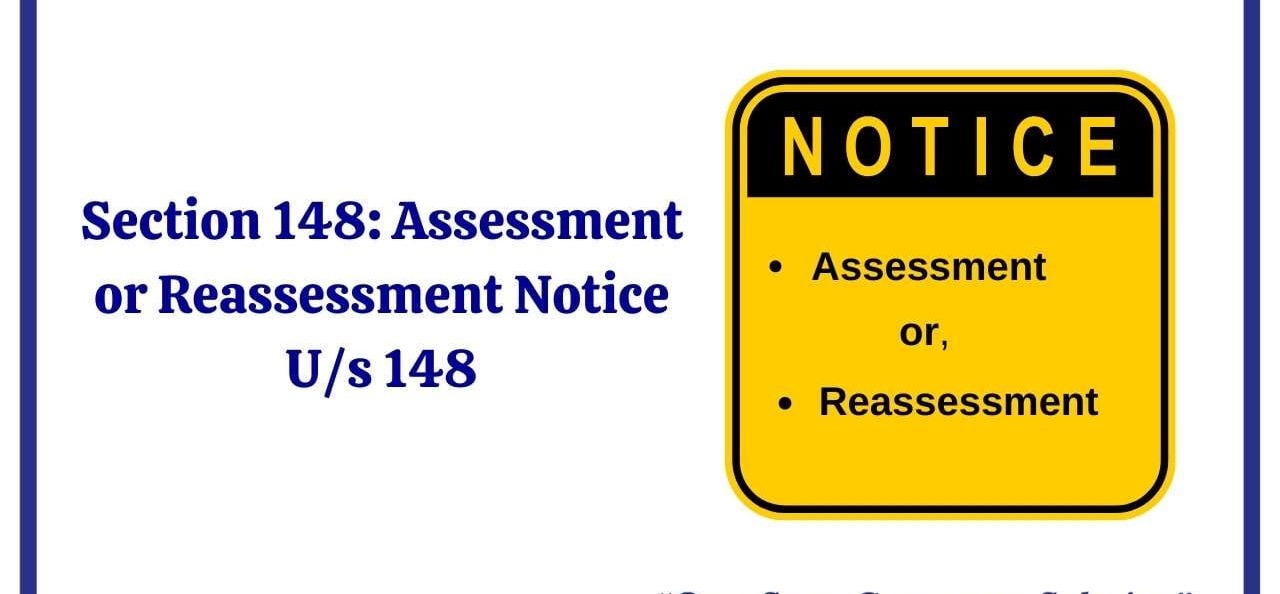DR. B.P. Saraf, J.@mdashBy this reference u/s 256(1) of the Income Tax Act, 1961, the Income Tax Appellate Tribunal has referred the following question of law at the instance of the Revenue to this court for opinion :
"Whether, on the facts and in the circumstances of the case, the Tribunal was right in holding that the limits prescribed u/s 80G(4) should be applied only after computation of the deduction allowable u/s 80G(1) so that the assessee would be entitled to deduction of 50 per cent. of the donation as restricted by the ceiling limit of ten per cent. of the total income ?"
2. The assessee is a limited company. This reference pertains to the assessment year 1973-74. In its assessment for this assessment year, the assessee-company claimed deduction u/s 80G(1) of the Income Tax Act, 1961 ("the Act"). The aggregate of the amounts referred to in sub-clauses (iv) and (v) of clause (a) of sub-section (2) exceeded the sum of Rs. 2 lakhs. The assessee computed the deduction u/s 80G of the Act as 50 per cent. of the aggregate of the sums specified in sub-section (2) without applying the ceiling of Rs. 2 lakhs specified in sub-section (4) in respect thereof. The Income Tax Officer did not accept the computation of the assessee. He was of the opinion that the ceiling specified in sub-section (4) of section 80G was applicable to the amount of donations falling under the heads specified therein and not to the amount of deduction allowable u/s 80G(1). He, therefore, recomputed the deduction by restricting the deduction under sub-section (1) in respect of such part of the aggregate of the sums referred to in sub-clauses (iv) and (v) of clause (a) of sub-section (2) to Rs. 2 lakhs. The assessee appealed to the Commissioner (Appeals). The Commissioner (Appeals), relying on the decision of the Andhra Pradesh High Court in
3. Section 80G of the Act as applicable to the assessment for the assessment year 1973-74, so far as it is relevant, read as follows :
"80G. Deduction in respect of donations to certain, funds, charitable institutions, etc. - (1) In computing the total income of an assessee, there shall be deducted, in accordance with and subject to the provisions of this section, an amount equal to, -
(a) where the assessee is a company, fifty per cent., and
(b) in the case of any other assessee, fifty-five per cent., of the aggregate of the sums specified in sub-section (2).
(2) The sums referred to in sub-section (1) shall be the following, namely :-
(a) any sums paid by the assessee in the previous year as donations to -
(i) the National Defence Fund set up by the Central Government; or
(ii) the Jawaharlal Nehru Memorial Fund referred to in the Deed of Declaration of Trust adopted by the National Committee at its meeting held on the 17th day of August, 1964; or
(iii) the Prime Minister''s Drought Relief Fund; or
(iv) another fund or any institution to which this section applies; or
(v) the Government of any local authority, to Be utilised for any charitable purpose;
(b) any sums paid by the assessee in the previous year as donations for the renovation or repair of any such temple, mosque, gurdwara, church or other place as is notified by the Central Government in the Official Gazette to be of historic; archaeological or artistic importance or to be a place of public workship of renown throughout any State or States.
(3) No deduction shall be allowed under sub-section (1) if the aggregate of the sums referred to in sub-section (2) is less than two hundred and fifty rupees.
(4) The deduction under sub-section (1) shall not be allowed in respect of such part of the aggregate of the sums referred to in sub-clauses (iv) and (v) of clause (a) and in clause (b) of sub-section (2) as exceeds ten per cent. of the gross total income (as reduced by any portion thereof on which Income Tax is not payable under any provision of this Act and by any amount in respect of which the assessee is entitled to a deduction under any other provision of this Chapter), or two hundred thousand rupees, whichever is less. :
Provided that where such aggregate includes any donations referred to in clause (b) of sub-section (2) and such aggregate exceeds the limit of two hundred thousand rupees specified in this sub-section, then such limit shall be raised to cover that portion of the donations aforesaid which is equal to the difference between such aggregate and the said limit, so, however, that the limit so raised shall not exceed ten per cent. of the assessee''s gross total income as reduced as aforesaid, or five hundred thousand rupees, whichever is less."
4. It is evident on a plain reading of section 80G itself that in the computation of the total income, the assessee who is a company is entitled to a deduction of an amount equivalent to 50 per cent. of the aggregate of the sums specified in sub-section (2). The deduction, however, would be assessed in accordance with and "subject to the provisions of this section". Sub-section (2) had categorised the amounts paid by the assessee under different heads in clauses (a) and (b). Amounts falling under clause (a) have been further classified in five categories under sub-clauses (i) to (v) of clause (a). Sub-section (3) provides that no deduction shall be allowed under sub-section (1) if the aggregate of the sums referred to in sub-section (2) is less than Rs. 250. In other words, sub-section (3) restricts the deduction under sub-section (1) only to those cases where the aggregate of the sums specified in sub-section (2) is not less than Rs. 250. Sub-section (4) puts a ceiling on the aggregate of the sums paid by the assessee in the previous year as donation referred to in sub-clauses (iv) and (v) and in sub-clause (b) of sub-section (2). It provides that the deduction under sub-section (1) shall not be allowed in respect of such part of the aggregate of the sums referred to in sub-clauses (iv) and (v) of clause (a) and in clause (b) of sub-section (2) as exceeds ten per cent. of the gross total income or Rs. 2 lakhs, whichever is less. This deduction under sub-section (1) is allowable at the rates specified therein, in respect of the aggregate of the sums specified in sub-section (2) subject to the ceiling proposed by sub-section (4). Sub-section (4) says in no less clear terms that deduction under sub-section (1) shall not be allowed in respect of the part of the aggregate of the sums referred to therein. Sub-section (4), thus, in terms puts a ceiling on the part of the aggregate of the sums specified in sub-section (2) in respect of which deduction can be allowed under sub-section (1). It does not deal with the amount of deduction that can be allowed under sub-section (1). The computation of deduction under sub-section (1) has to be made in respect of the aggregate of the sums specified in sub-section (2) read with sub-section (4). We are, therefore, of the clear opinion that the ceiling specified in sub-section (4) applies to the aggregate of the sums in respect of which deduction is claimed and not to the amount of deduction allowed under sub-section (1) which has to be computed in the manner specified therein.
5. We have carefully considered the decision of the Andhra Pradesh High Court in
6. Learned counsel for the assessee made two further submissions. Firstly, according to him, there being two decisions of two different High Courts, one in favour of the assessee and another against the assessee, the one in favour of the assessee should be accepted. It is stated by learned counsel that it is well-settled that where two views are possible, the one beneficial to the assessee should be accepted by the courts. So far as this proposition as such is concerned, we do not find any difficulty in accepting the same. We, however, find it difficult to equate the two decisions with two reasonable interpretations. According to us, the question of accepting the principle of beneficial interpretation would arise only in a case where two views are reasonably possible in the opinion of the court deciding the point at issue. In such a case the court should tilt in favour of the assessee. But where on a plain reading of the statutory provision, it is of the opinion that one and only one interpretation is reasonably possible and that is against the assessee, it cannot give an erroneous interpretation in favour of the assessee by taking resort to the principle of beneficial interpretation.
7. As observed by this court in
"............. this principle applies only when there is reasonable and genuine doubt in regard to the interpretation of a particular provision. It has no application to a case where the provision is clear and the law is well-settled. This principle cannot be stretched too far. It cannot be used to misinterpret a statutory provision which is otherwise clear and brooks no doubt about its meaning or interpretation just to give benefit to the taxpayer which the statute did not intend to give."
8. To the same effect is the decision of this court in
". . . . the principle of beneficial interpretation or interpretation in favour of the assessee has application only in a case where, on a proper interpretation, the court is in doubt about the true scope and ambit of the provision or finds that two equally reasonable interpretations - one in favour of the assessee and the other in favour of the Revenue - are possible. It is only in such cases that the question of accepting one of the two reasonably possible interpretations would arise. The principle of beneficial interpretation has no application in a case where the words of a statute are plain, precise and umambiguous. In that case, the courts have no option but to give effect to it."
9. This view was reiterated by this court in
"It is, therefore, clear that it is the satisfaction of the court interpreting the law that the language of the taxing provision is ambiguous or reasonably capable of more meanings than one, which is material. If the court does not think so, the fact that two different views have been advanced by parties and argued forcefully, or that one such view which is favourable to the assessee has been accepted by some Tribunal or High Court, by itself will not be sufficient to attract the principle of beneficial interpretation."
10. We are, therefore, of the clear opinion that the principle of beneficial interpretation has no application to the present case.
11. Another submission of learned counsel for the assessee was that section 80G being intended to give relief in respect of donations for charitable purposes, it should be construed liberally so as to give benefit to the assessee. We appreciate the sentiments of learned counsel. Left to us we might have considered this submission. But that is not so. It is for the Legislature to decide how much relief to give in respect of which donations, when and under what circumstances. Where the law is clear and unambiguous, we cannot act contrary to it with a view to giving benefit to an assessee who has donated for a charitable purpose. In view of the above, we answer the question referred to us in the negative and in favour of the Revenue.
12. In the facts and circumstances of the case, there shall be no order as to costs.

